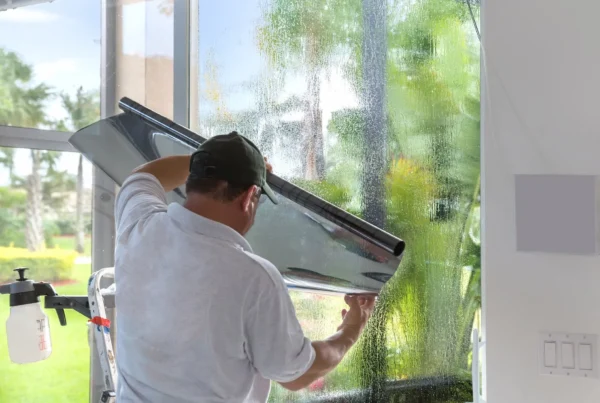Vacuum cleaners are essential tools for maintaining a clean and healthy home environment. However, encountering smoke while using your vacuum can be concerning and potentially hazardous. Understanding the reasons behind this issue and learning how to address why Is my vacuum smoking can help you keep your vacuum running smoothly and effectively.
Common Reasons for Vacuum Smoking
Overheating Motor
One prevalent cause of a smoking vacuum cleaner is the occurrence of an overheating motor, often stemming from a range of motor issues. Electric motors, central to a vacuum’s functionality, can encounter problems like faulty components or insufficient airflow due to clogged filters. When these issues arise, the motor’s temperature regulation can falter, leading to excessive heat buildup.
Consequently, this overheating can result in visible signs such as vacuum smoking, presenting a clear indication that timely attention to motor maintenance and potential repairs is crucial for sustaining optimal vacuum performance.
Clogged Airflow
When debris, including fine carpet fibers, accumulates within the vacuum’s system, it restricts the movement of air and strains the motor. This strain can lead to the overheating of the motor, resulting in the alarming sight of smoke. A frequently overlooked culprit behind clogged airflow is a dirty or obstructed vacuum filter. To address this issue effectively and ensure the longevity of the appliance, seeking the assistance of a professional repair service is recommended, as they possess the expertise to not only resolve the immediate problem but also prevent future occurrences through proper maintenance and filter care.
Worn-out Belts
Worn-out belts are a common concern with a vacuum model, often leading to a decrease in their overall efficiency. These belts, vital components that facilitate the movement of the vacuum’s brush roll, can deteriorate over time due to regular use. When a belt becomes worn or frayed, its ability to effectively drive the brush roll diminishes, resulting in reduced suction and cleaning performance. A broken belt can bring the vacuum’s functionality to a standstill. To address this issue, regular inspection and timely replacement belt are crucial to maintain the optimal functioning of vacuum cleaners and ensure that they continue to deliver the desired cleaning results.
Debris in the Brush Roll
The presence of debris in the roller brush can lead to various issues within a vacuum cleaner’s operation. When the roller brush, a key component responsible for agitating and loosening dirt from surfaces, becomes obstructed with debris such as hair, threads, or other particles, its effectiveness is compromised. This obstruction not only hinders efficient cleaning but can also strain the vacuum’s motor and drive belt as it struggles to maneuver the faulty brush roller. Regular maintenance, including the removal of accumulated debris, is essential to ensure the smooth operation of the roller brush and prevent unnecessary wear on components like the drive belt, ultimately prolonging the vacuum cleaner’s lifespan and optimizing its cleaning performance.
Importance of Addressing the Issue
Ignoring the issue of a smoking vacuum cleaner can have serious consequences. It not only indicates a problem with the vacuum’s functionality and improper usage but also poses a major reason for fire hazards. Addressing the underlying causes promptly is crucial and essential to prevent any potential accidents, and potential reasons and smooth the cleaning process.
How to Diagnose Smoking in Your Vacuum
To determine the cause of smoke in your vacuum, follow these steps:
Unplug and Inspect
When faced with smoking in your vacuum, a prudent initial step is to unplug the appliance and conduct a thorough inspection. Begin by checking for a broken brush roller, as a malfunctioning roller can lead to excessive friction and overheating, resulting in smoke. If the brush roller appears intact, proceed to examine the vacuum’s air filter. A clogged or dirty filter can impede proper airflow, causing the motor to overheat and emit smoke. Additionally, take note of any unusual vacuum smell, which could indicate burnt components. By systematically evaluating these factors, you can identify the root cause of the issue and determine whether a broken brush roller, blocked air filter, or other factors are responsible for the smoking, enabling you to take appropriate actions for repair and maintenance.
Check for Blockages
Examine the vacuum hose for any obstructions that could impede the suction process. If the hose is clear, extend your assessment to the entire vacuum system, including its filters and attachments, as accumulated debris can restrict airflow and lead to overheating. Pay special attention to the roller brush, as it might harbor objects that have become lodged, causing strain on the motor and resulting in smoke. Identifying and removing these blockages will not only address the immediate issue but also ensure the continued efficiency and longevity of your vacuum cleaner.
Examine the Belt
A worn or broken belt can lead to a range of issues, including reduced suction power and brush roll functionality. Carefully inspect the belt for signs of wear, such as fraying or stretching, as this can hinder its ability to transfer power effectively. Additionally, ensure the belt is properly attached and aligned. If the belt isn’t engaging the brush roll or exhibits signs of wear, it could strain the motor or cause other components to malfunction. By addressing belt-related issues promptly, you can prevent further damage to the vacuum’s motor and power source, ensuring optimal performance.
Clean the Brush Roll
Maintaining a smoothly functioning upright vacuum necessitates regular cleaning, with special attention to the brush roll. The brush roll, a pivotal element responsible for agitating dirt and debris, can accumulate hair, threads, and other particles over time. This buildup not only diminishes the vacuum’s cleaning efficiency but can also lead to strain on the motor. Cleaning the brush roll involves removing any entangled debris and inspecting for signs of wear. Neglecting this routine maintenance can exacerbate underlying issues, potentially affecting the vacuum’s overall performance and longevity. Regularly tending to the brush roll ensures optimal cleaning results and prevents unnecessary wear on critical components, contributing to a more effective and enduring upright vacuum.
Preventive Measures to Avoid Vacuum Smoking
To prevent your vacuum from smoking, follow these preventive measures:
Regular Maintenance
Engaging in consistent maintenance practices is a key preventive measure to avert the occurrence of vacuum smoking. Regularly inspecting the various components of the vacuum, such as the brush roll, belts, and filters, helps identify signs of wear or blockages before they escalate into more serious issues. Addressing these concerns promptly not only ensures optimal performance but also prevents undue strain on the motor, which can lead to overheating and smoking. By making regular maintenance a habit, vacuum owners can prolong the appliance’s lifespan and maintain its efficiency.
Proper Airflow
Maintaining proper airflow is paramount to preventing vacuum smoking. Ensuring that air can freely flow through the vacuum’s system is crucial for optimal operation. Regularly checking for obstructions in the vacuum hose, attachments, and other pathways helps prevent debris buildup that can hinder airflow and cause the motor to overheat. A clear airflow path ensures efficient suction and cooling, reducing the risk of smoking and enhancing the vacuum’s longevity.
Cleaning the Filter
Cleaning the filter is an essential preventive measure to avoid vacuum smoking. Filters can become clogged with dirt, dust, and debris over time, obstructing airflow and causing the motor to work harder than necessary. Regularly cleaning or replacing the filter, as per the manufacturer’s recommendations, ensures that the vacuum can maintain proper suction and prevent the motor from overheating. This simple yet effective step contributes significantly to preventing smoking and maintaining the vacuum’s optimal performance.
Emptying the Dustbin
Frequently emptying the dustbin is a straightforward yet crucial preventive measure to prevent vacuum smoking. As the dustbin fills up, airflow becomes restricted, and the vacuum’s overall efficiency diminishes. This restriction places additional stress on the motor, increasing the likelihood of overheating and smoking. Regularly emptying the dustbin prevents these issues, maintaining proper airflow and preventing the accumulation of debris that could lead to more significant problems down the line.
When to Seek Professional Help
Knowing when to seek professional help with your vacuum is essential, particularly when dealing with complex issues that go beyond basic maintenance. If you encounter persistent problems with the vacuum brush, such as irregular spinning or complete malfunction, it might indicate mechanical issues that require expertise to diagnose and repair accurately. Similarly, if you notice unusual sounds, burning smells, or electrical problems like sparks or flickering lights, it’s best to consult professionals. These signs often point to underlying electrical issues that can pose safety hazards. Seeking professional assistance in such cases ensures that the root cause of the problem is addressed effectively, preventing further damage and potentially hazardous situations while extending the lifespan of your vacuum.
Conclusion
Dealing with a smoking vacuum and vacuum smell can be alarming, but it’s a problem that can be resolved with proper understanding and maintenance. By addressing the root causes of smoke and following preventive measures, you can extend the life of your vacuum and maintain a clean home environment.
Wondering “how to clean the sofa at home without vacuum cleaner?” Click for simple tips and achieve a fresh, spotless couch effortlessly!
Unlock the Secrets of a Smoke-Free Clean with ProClean!
Curious about the smoke coming from your vacuum? At ProClean, we’re not just cleaning experts – we’re detectives of dirt! Let us investigate the issue, provide effective solutions, and ensure your cleaning routine is smooth and smoke-free. Join us in discovering the art of efficient cleaning – book your appointment today! Contact us now!
FAQs: Why is My Vacuum Smoking
Can a smoking vacuum catch fire?
While not all smoking vacuums lead to fires, it’s a potential risk. Addressing the issue promptly is essential to prevent any fire hazards.
Why is regular maintenance important for my vacuum?
Regular maintenance helps prevent issues like overheating and smoking by ensuring all components function optimally.
Can I replace the vacuum belt myself?
Yes, you can replace the vacuum belt yourself, but make sure to follow the manufacturer’s instructions for proper installation.
Is vacuum smoking harmful to my health?
Vacuum smoking can release unpleasant odors and potentially harmful particles. It’s important to resolve the issue for a healthier home environment.
How often should I clean my vacuum filters?
The frequency of filter cleaning depends on usage. Check the manufacturer’s recommendations, but a good rule of thumb is to clean or replace them every few months.
[/fsn_text][/fsn_column][/fsn_row]





